 You may have been wondering when and who would point out the silver lining in the current situation, where the interruption of decades of mass immigration has seen employment prospects and living standards for many ordinary people looking good in Australia for the first time in decades. If so, you will be very pleased to catch the following interview between 2GB's Michael McLaren and the Sustainable Australia Party's William Bourke, on this very issue. We are living through fascinating times.
You may have been wondering when and who would point out the silver lining in the current situation, where the interruption of decades of mass immigration has seen employment prospects and living standards for many ordinary people looking good in Australia for the first time in decades. If so, you will be very pleased to catch the following interview between 2GB's Michael McLaren and the Sustainable Australia Party's William Bourke, on this very issue. We are living through fascinating times.
On 10 May 2021, Michael Mclaren (2GB radio) was joined by William Bourke, President of the Sustainable Australia Party, to comment on the RBA’s report that suggests that the pause in immigration due to the COVID-19 pandemic will lead to higher living standards in Australia and could spark wage rises in some regions and industries - even though the economy will be smaller than previously expected. In its quarterly statement on monetary policy the preceding week, the RBA noted, “The Australian economy is transitioning from recovery to expansion phase earlier and with more momentum than anticipated.”
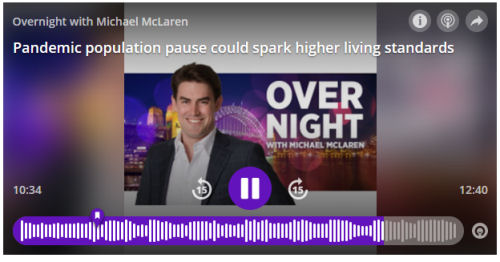
Transcript
[Candobetter editor: Note that this was done via automatic transcript then corrected by a human editor. Please let us know if you find any mistakes.]
MICHAEL : Well, there has been a lot of side-effects from the Cornona Virus … we’re probably all sick to death of talking about it but, one that probably hasn’t been mentioned is that it has done a couple of people probably out of a job – at the very least, it has proved them right – I’m talking about the team behind the Sustainable Australia Party – because, if nothing else, COVID has closed the borders. There are now no real prospects of masses of migrants coming in to work or to fill job vacancies, or whatever the story was, prior to the pandemic.
However, as I said, I think it has proved the point, because, for many years, William Bourke and the whole team behind him at Sustainable Australia and people like Dick Smith, who’ve supported them, have been banging the drum of logic, saying that Australia does not need unsustainable levels of growth in the population to remain wealthy, to remain prosperous, indeed to grow.
And, sure enough, they have now got an ally, I don’t know if they meant to or not, in the form of the Reserve Bank. In their quarterly statement, on monetary policy – it was released on Friday - most people don’t read it of course – but they made the point that the level of GDP – Gross Domestic Product – is expected to remain a little below forecast before the pandemic – mostly due to the lower population growth – however, in per capita terms, GDP is expected to be on a higher trajectory, supported by higher per capita household income and a strong contribution from public demand. In other words, the pause to Big Australia will lead to higher living standards and could spark wage-rises in some regions and some industries according to the Reserve Bank.
Now, the Big Australia advocates said this was impossible. Many of us said they were wrong all along and motivated by greed.
Well, William Bourke is the President of the Sustainable Australia Party and on the line. William, nice to talk with you again.
WILLIAM BOURKE: Good to be with you, Michael.
MICHAEL: Sadly, I suppose, COVID has done you out of a gig. The borders are closed. The population will flatline for a while, and the experiment that you’ve called for will happen, for no other reason than medical science has demanded it happens. I suppose, if you are proved right, you will go out a happy man, won’t you?
WILLIAM BOURKE: Well Michael, obviously population growth is something we’ve been concerned about, since we’ve been going – probably a decade or so. We’ve got some other issues we do stand for, overdevelopment and environmental issues, but yes, absolutely, it’s amazing that COVID has revealed, once and for all, that high immigration is notnecessary to either keep the economy growing, or to create jobs.
So, it’s great to see the RBA coming to their senses. And many other mainstream economists are also saying things like, ‘Lower immigration is equalling higher wages.’ So there’s a great lot of things that are coming out of this unfortunate COVID pandemic.
MICHAEL MCLAREN: And it’s logical, is it not, because, when you flood the economy with workers, obviously the whiphand is that of the bosses. They can say to Bob, well, if you don’t want to work for that amount of money, I’ll go over there to Frank. He’ll do it. But when the number of people available for jobs is smaller, Bob and Frank both start, all of a sudden, to have a bit of bargaining power, don’t they!
WILLIAM BOURKE: Indeed, and obviously, when you bring in highly exploitable people, who really don’t have a lot of bargaining power, who aren’t part of … I guess, unions and so forth, then you can beat down wages. And we’ve seen a lot of – you know – probably the lowest growth in wages over the last decade in the last century.
These things are now starting to see a pick-up in wages, and that’s a good thing for the average Australian.
MICHAEL MCLAREN: They are. I saw that Tom Dusevic of the Australian said, and I quote,
”During recent years, when population growth averaged a rich, world-leading, one and a half per cent a year [...]"
- which is just madness -
“with two thirds of it due to net-overseas migration, per capita incomes fell, even though national output was expanding at a fast clip, compared to our peers.”
In other words, the nation was getting wealthier – that’s National GDP, the individuals that make up the nation, that do the work, were actually going backwards.
WILLIAM BOURKE: Exactly, and the point there being that GDP per capita is really the proxy for living standards. So, the aggregate growth in GDP really doesn’t matter, if all of us are going backwards on average. And we know that there has been a lot of discussion about, you know, this 20 plus year run of ‘no recessions’ and so forth, but if you look at it on a GDP per capita basis, there were three recessions over the last 25 or so years, where GDP per capita went backwards, two quarters in a row. So, there’s a lot of misinformation out there, and we really need to look at the per capita of GDP, not the aggregate level.
MICHAEL MCLAREN: Yep. Now, none of this is to gloat. There are some sections of the economy which are doing it particularly difficult. The business model was heavily reliant on the migrant labour workforce. Hospitality, for example, their business model has been disrupted. A lot of people are doing it tough, but on a per capita basis, the average Australian looks like they may come out in front. And, of course, again, to be completely up-front, a huge amount of stimulus from the Federal Government also helps in that respect, and to remove that might have created a different story, but it just goes to prove the point, does it not, William, that you don’t need record levels of migration to continue economic growth?
WILLIAM BOURKE: That’s exactly the point. There’s a lot of studies out there about the impact of immigration on the economy, but a lot of it is based on, you know, assumptions. This is empirical evidence. This is very very very clear now, that where there is no immigration, we are still growing our economy and we are still creating jobs, and we have actually reduced the unemployment rate. So we’ve gone from seven odd per cent down to about five and a half per cent, and we look like going down to around four and a half per cent. That’s because a lot of people who have been long-term unemployed are now getting an opportunity to get a job. And isn't that a great thing?
MICHAEL MCLAREN: Well, it is and the tighter labor market Also pushes an important extra emphasis on behalf of government, and even business, on the issue of skills or re-skilling the Australian population, including those that are unemployed.
Most unemployed people want to work. They take they take no pride in not having a job but they may not have the skills to do it, so, you know, it's great. We've got the budget, of course tomorrow night. There may be something in there about this too, but there is a greater emphasis on business and government to say, well, look, you're not going to get the fresh blood in anytime soon. There is a bit floating around here though that needs a gig. Train them up, get them in a job.
WILLIAM BOURKE: There's a much greater focus on training and education as you say Michael and I'm sure that Treasurer Josh will be mentioning much more investment in training and education in the budget, and I've seen, you know, some media reports to that extent. So that's it. That's a really encouraging thing, because at the end of the day, we do have the labour here in Australia. We do need to continue to evolve our economy and evolve our skills. And that's what's happening right now, and it's a good thing.
MICHAEL MCLAREN: And, Will, to add to all of this, the re-emphasis, or the newly emerged emphasis, on needing to be more self resilient, more independent, instead of relying on international supply chains and there. And, there again, all of a sudden, you are incentivising people to re-establish, or freshly establish, sovereign industries in this country, particularly manufacturing-oriented industries, which – again - will help mop up a percentage of the unemployed.
WILLIAM BOURKE: Exactly right. And, at the moment, you're probably aware, the Upper Hunter by-election is on in New South Wales. We've got a candidate running there and he works on the railways.
He's an engineer working on railway maintenance and, you know, we built the Tangara trains in Newcastle, you know, the Hunter area and now we're importing them from South Korea. So we need to turn back to making our own trains. And manufacturing, you know, our medical supplies. All of those issues that we thought we can just outsource overseas. I think we're now realizing finally that that's not a sustainable way to run an economy.
WILLIAM MCLAREN: Why then for so many years, we mention those record levels of immigration, despite the average Australian not wanting it. People are in favor of some immigration, sure, a bit of fresh blood doesn't hurt, but there's sort of nonsense of one-and-a-half percent growth per year. It was just a disaster on the property , on traffic – everything. Services. Why did it persist for so long? I mean, I'm a bit ignorant, I suppose, but I thought that democracy was basically the elected officials representing the will of the people, but on that issue, it couldn't have been more opposite. So, why did it persist for so long?
WILLIAM BOURKE: So, I think Michael there are some groups in our society, in our economy, in our political environment, they have a little bit more power than the average person. And obviously, you know, the property industry, you know, big business and so forth. You know, they have a fair bit of sway. They've been complaining, even very lately about skills shortages and, Immigration Minister Alex Hawk, has just allowed a doubling of the hours of foreign students from 20 to 40 hours a week. So they're having a lot of influence, you know, because of political donations and other aspects of the body politic. And I guess that it would be nice if we did have a plebiscite or a referendum. Do we want to grow our population at this extreme rate of 1.5 plus percent when the developed world really should grow at, you know 0.2 per cent at the most.
MICHAEL MCLAREN: I was a little facetious early when I said that covid had probably done you out of a gig. Sustainable Australia, as you quite rightly said, stands for more than just a population issue. Just talk us through a little of what else it is that interests your party.
WILLIAM BOURKE: Well, we're a fairly centrist party Michael. So, you know, we talk about the big picture issues that matter. Obviously sustainable is about protecting our environment, and we really do want to make sure that, you know, we're not sprawling our suburbs, over our agricultural farm land. For example, we really want to stop overdevelopment and return planning powers to local communities.
I'm running in the North Sydney council elections in a couple of months. So, you know, making sure that local people have a say on the character of and the heritage values of their neighborhood. So those are some of the issues.
Corruption is an increasingly big issue that we're focusing on and I think there's a bit of corruption in this Big Australia, where vested interests are influencing our politicians rather than the public interest being put first. So that's just a couple of things that we stand for.
MICHAEL MCLAREN: A lot of common sense. Always good to talk to you. We’ll speak again, soon, William. Thank you so much for all that time.
WILLIAM BOURKE: Thanks for having me. Michael.
MICHAEL MCLAREN: That's my pleasure William Burke. As I said the President of the Sustainable Australia Party
 This film appears at first to comfort truth, but it is really a growth-lobby production, advocating the same 'solutions' as the global-realtors of the MSN and the Australian and state governments. Here's my analysis.
This film appears at first to comfort truth, but it is really a growth-lobby production, advocating the same 'solutions' as the global-realtors of the MSN and the Australian and state governments. Here's my analysis.
 "Currently, buildings and infrastructure are directly responsible for almost one third of Australia’s total carbon emissions, and indirectly responsible for over half of all emissions." (Report:
"Currently, buildings and infrastructure are directly responsible for almost one third of Australia’s total carbon emissions, and indirectly responsible for over half of all emissions." (Report: 
 Federal Education Minister Jason Clare announces increase in foreign student intake by 295,000 net per year. This is a catastrophe for Australian cities. Labor's foreign student system is a corrupt racket. The intake is not truly multicultural or humanitarian, as it consists of about 90% affluent students from the People's Republic of China and India, rather than refugees or individuals from impoverished backgrounds.
Federal Education Minister Jason Clare announces increase in foreign student intake by 295,000 net per year. This is a catastrophe for Australian cities. Labor's foreign student system is a corrupt racket. The intake is not truly multicultural or humanitarian, as it consists of about 90% affluent students from the People's Republic of China and India, rather than refugees or individuals from impoverished backgrounds.
 You may have been wondering when and who would point out the silver lining in the current situation, where the interruption of decades of mass immigration has seen employment prospects and living standards for many ordinary people looking good in Australia for the first time in decades. If so, you will be very pleased to catch the following interview between 2GB's Michael McLaren and the Sustainable Australia Party's William Bourke, on this very issue. We are living through fascinating times.
You may have been wondering when and who would point out the silver lining in the current situation, where the interruption of decades of mass immigration has seen employment prospects and living standards for many ordinary people looking good in Australia for the first time in decades. If so, you will be very pleased to catch the following interview between 2GB's Michael McLaren and the Sustainable Australia Party's William Bourke, on this very issue. We are living through fascinating times. 
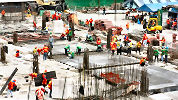 On 27 March 2020, the AWU and Master Builders Australia jointly called on governments to ensure the continued operation of the building and construction industry, claiming that without it the economic knock-on effects would be devastating on a scale that would dwarf what we have seen to date.
On 27 March 2020, the AWU and Master Builders Australia jointly called on governments to ensure the continued operation of the building and construction industry, claiming that without it the economic knock-on effects would be devastating on a scale that would dwarf what we have seen to date. Poverty, unemployment, homelessness, and overcrowding stalk more and more Hong Kong citizens. The United States is pushing for regime change, but that won't change anything for the better. In this half-hour video about the Hong Kong riots, and more about the US attempts at regime-change there than you will hear elsewhere, Michelle Greenstein gives a rundown on the social problems that have made the Hong Kong poor ready to riot. Although Greenstein talks about wealth inequality and the need for better distribution, she fails to identify what it is about Hong Kong's system that has caused these massive social disparities and housing shortfalls. The Hong Kong inheritance system is probably a major contributor to Hong Kong's wealth disparity and homelessness, however. Hong Kong's system is similar to Australia's and that of most American states. Inherited from Britain, it allows parents to disinherit their children and to leave property to anyone they choose.[1] This permits the alienation of property from families and its aggregation within corporations, other families or individuals, in fewer and fewer hands. The people lose control of the place. It is in this way that property speculation has come to rule over democracy in Hong Kong. The Hong Kong population and property growth lobby has taken over by engineering Hong Kong's population growth, with immigration numbers about three times as high as natural replacement numbers since 2014. A pretext, as in Australia, is that immigrants are needed to combat
Poverty, unemployment, homelessness, and overcrowding stalk more and more Hong Kong citizens. The United States is pushing for regime change, but that won't change anything for the better. In this half-hour video about the Hong Kong riots, and more about the US attempts at regime-change there than you will hear elsewhere, Michelle Greenstein gives a rundown on the social problems that have made the Hong Kong poor ready to riot. Although Greenstein talks about wealth inequality and the need for better distribution, she fails to identify what it is about Hong Kong's system that has caused these massive social disparities and housing shortfalls. The Hong Kong inheritance system is probably a major contributor to Hong Kong's wealth disparity and homelessness, however. Hong Kong's system is similar to Australia's and that of most American states. Inherited from Britain, it allows parents to disinherit their children and to leave property to anyone they choose.[1] This permits the alienation of property from families and its aggregation within corporations, other families or individuals, in fewer and fewer hands. The people lose control of the place. It is in this way that property speculation has come to rule over democracy in Hong Kong. The Hong Kong population and property growth lobby has taken over by engineering Hong Kong's population growth, with immigration numbers about three times as high as natural replacement numbers since 2014. A pretext, as in Australia, is that immigrants are needed to combat 

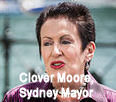
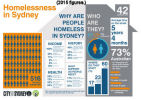 Lord Mayor Clover Moore has nothing to congratulate herself on with regard to homelessness in Sydney. The City of Sydney’s most recent street count has revealed that homelessness has risen and crisis shelters are at capacity. Although the City has been collecting levies from developers to create affordable housing since 2004, it has only created 835 new affordable housing dwellings in that time. Whilst the *official* number of homeless in Sydney reached 592 in August 2019 (with so many more couch-surfing and living on credit), Australia has continued to import approximately one million immigrants every two years, pushing up the price of housing and causing pressure on Sydney's very scarce land, to the extent that NSW State Premier, Gladys Berejiklian asked the Federal Government to halve the immigration numbers - to no avail. Lendlease private developments is
Lord Mayor Clover Moore has nothing to congratulate herself on with regard to homelessness in Sydney. The City of Sydney’s most recent street count has revealed that homelessness has risen and crisis shelters are at capacity. Although the City has been collecting levies from developers to create affordable housing since 2004, it has only created 835 new affordable housing dwellings in that time. Whilst the *official* number of homeless in Sydney reached 592 in August 2019 (with so many more couch-surfing and living on credit), Australia has continued to import approximately one million immigrants every two years, pushing up the price of housing and causing pressure on Sydney's very scarce land, to the extent that NSW State Premier, Gladys Berejiklian asked the Federal Government to halve the immigration numbers - to no avail. Lendlease private developments is 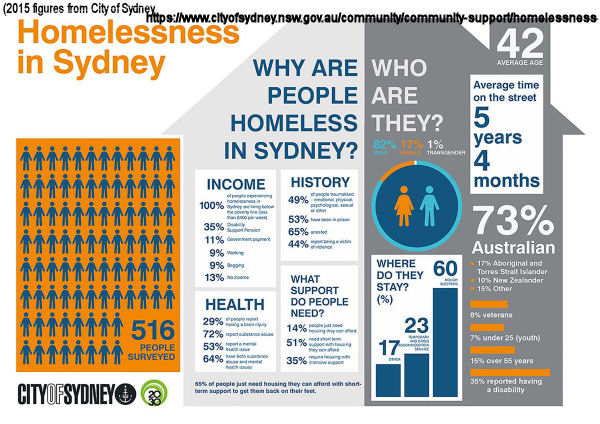
 A recent interview of the Prime Minister by Leigh Sales in the 7.30 Report on Tuesday 29 January 2019 provided a good illustration of the lack of understanding of economics by ABC journos or their deliberate and calculated rejection of some simple truths. John Coulter has written to Leigh Sales as follows.
A recent interview of the Prime Minister by Leigh Sales in the 7.30 Report on Tuesday 29 January 2019 provided a good illustration of the lack of understanding of economics by ABC journos or their deliberate and calculated rejection of some simple truths. John Coulter has written to Leigh Sales as follows. 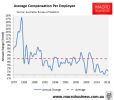 "What this debate is really about is not who gets what jobs but which elements of capital win along the way. McDonald and Richardson are obsessed with supporting the immigration-led urbanisation sectors to the detriment of tradables and wider community living standards as infrastructure fails to keep up, wages are crushed by the rush of cheap foreign labour and house prices shoot to stupid levels. McDonald is a demographer not economist so has no idea. Richardson has simply lost the macro plot. Before these dills came along with their immigration voodoo Australia and its labour market fared just fine and it will afterwards as well. In fact it will be better in time as the permanent supply shock of cheap foreigners killing wages and productivity ends, boosting income."
"What this debate is really about is not who gets what jobs but which elements of capital win along the way. McDonald and Richardson are obsessed with supporting the immigration-led urbanisation sectors to the detriment of tradables and wider community living standards as infrastructure fails to keep up, wages are crushed by the rush of cheap foreign labour and house prices shoot to stupid levels. McDonald is a demographer not economist so has no idea. Richardson has simply lost the macro plot. Before these dills came along with their immigration voodoo Australia and its labour market fared just fine and it will afterwards as well. In fact it will be better in time as the permanent supply shock of cheap foreigners killing wages and productivity ends, boosting income." 
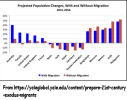 YaleGlobal announces: "Prepare for the 21st Century Exodus of Migrants ... Cross-border immigration accounts for much of the population growth in developed countries with low fertility rates. Such immigration has also become an election issue around the globe." Unfortunately open borders are being promoted in order to maintain constant population growth; the 'developed world' ideas managers are not really trying to avert this disaster. "If those taking steps necessary to migrate were to immigrate to desired destinations, the result would expand UN-projected annual numbers for major migrant-receiving Western countries by more than tenfold," writes Joseph Chamie, (this Yale article). That would mean immigration at about 2.5m every year in Australia, or about 10% of Australia's current population. This would have Australia's population initially doubling in 10 years, but of course it would then grow faster and faster, due to compounding natural increase and an increasing population base! 75% of Australia is rangelands and arid desert, similar to North Africa. Australia's politically engineered immigration-fed population growth rate is already overwhelming its infrastructure. The increased demand means money for developers, but increased prices for most people. Reading Chamie's article makes me again wonder whether modern economics has actually confused people with dollars.
YaleGlobal announces: "Prepare for the 21st Century Exodus of Migrants ... Cross-border immigration accounts for much of the population growth in developed countries with low fertility rates. Such immigration has also become an election issue around the globe." Unfortunately open borders are being promoted in order to maintain constant population growth; the 'developed world' ideas managers are not really trying to avert this disaster. "If those taking steps necessary to migrate were to immigrate to desired destinations, the result would expand UN-projected annual numbers for major migrant-receiving Western countries by more than tenfold," writes Joseph Chamie, (this Yale article). That would mean immigration at about 2.5m every year in Australia, or about 10% of Australia's current population. This would have Australia's population initially doubling in 10 years, but of course it would then grow faster and faster, due to compounding natural increase and an increasing population base! 75% of Australia is rangelands and arid desert, similar to North Africa. Australia's politically engineered immigration-fed population growth rate is already overwhelming its infrastructure. The increased demand means money for developers, but increased prices for most people. Reading Chamie's article makes me again wonder whether modern economics has actually confused people with dollars.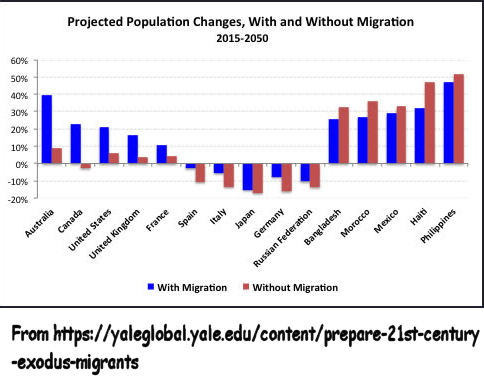

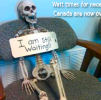 Nobel Peace Prize winning economist Milton Friedman once said that you can have mass immigration or you can have the welfare state. But you can't have both.
Nobel Peace Prize winning economist Milton Friedman once said that you can have mass immigration or you can have the welfare state. But you can't have both. 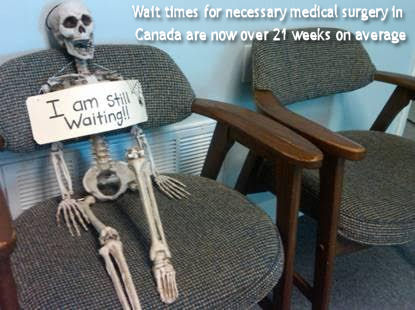
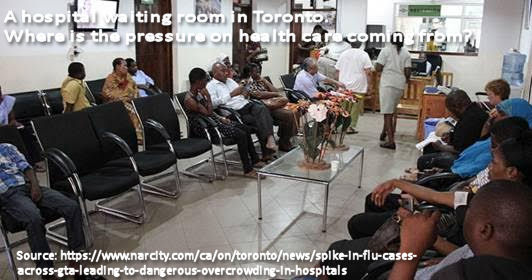
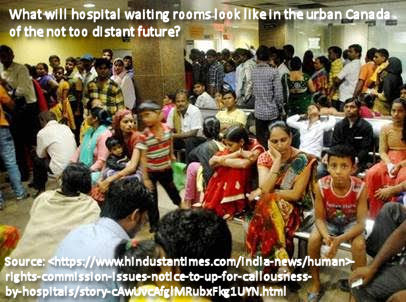
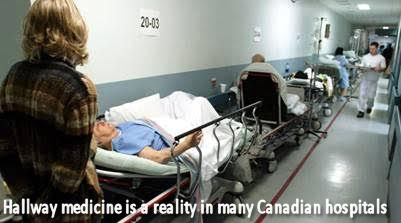
 House prices are higher in Sydney and Melbourne than in almost all other developed-nation cities with the result that most young households cannot afford to buy a detached house. Why? Part of the explanation is a combination of generous tax benefits to investors and upgrading home owners. This has prompted massive investment in dwellings, but mostly in established detached housing. This investment drives up prices without adding to supply. New research report, 3 July 2018Bob Birrell and Ernest Healy,
House prices are higher in Sydney and Melbourne than in almost all other developed-nation cities with the result that most young households cannot afford to buy a detached house. Why? Part of the explanation is a combination of generous tax benefits to investors and upgrading home owners. This has prompted massive investment in dwellings, but mostly in established detached housing. This investment drives up prices without adding to supply. New research report, 3 July 2018Bob Birrell and Ernest Healy,  Anyone that lives in Sydney or Melbourne will have experienced the crippling rise in congestion on our transport networks first hand. Morning and evening peaks now run for hours, traffic is forever thick on the weekends, and the time taken to travel from point A to point B now takes longer than ever. Article originally published at
Anyone that lives in Sydney or Melbourne will have experienced the crippling rise in congestion on our transport networks first hand. Morning and evening peaks now run for hours, traffic is forever thick on the weekends, and the time taken to travel from point A to point B now takes longer than ever. Article originally published at 



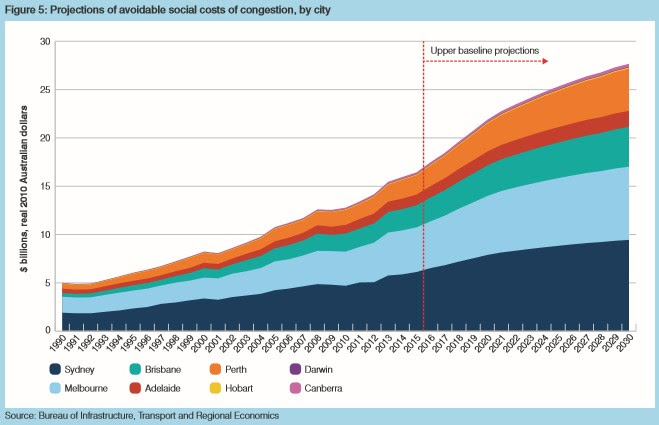


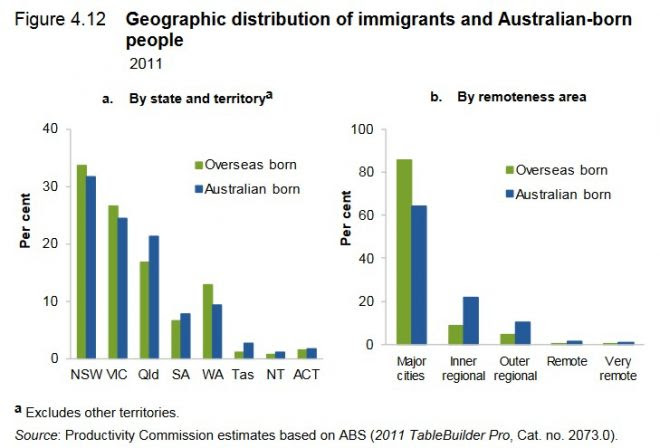

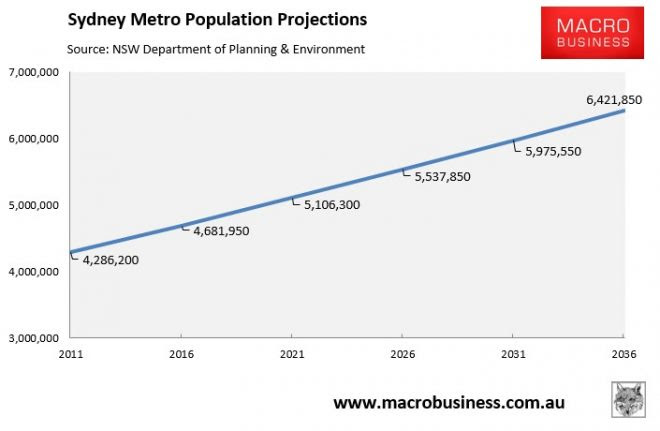

 Alex Jones! Infowars! I hear you say. Aren't they the far-right conspiracy theorists? Isn't Alex Jones a card-carrying nutcase? Well, that's what the mainstream press say about him and his followers, all 50 m plus.[1] Mainstream media is on the way out, but Jones is on the way up and he really puts on a show. Maybe judge the pudding by its contents, which vary. But sometimes Infowars seems to really hit the nail on the head. Before you scoff, check out the following video, which is about planning threats to self-government in Austin Texas. Remind you of Australia's cities and towns? You won't hear it on the mainstream news.
Alex Jones! Infowars! I hear you say. Aren't they the far-right conspiracy theorists? Isn't Alex Jones a card-carrying nutcase? Well, that's what the mainstream press say about him and his followers, all 50 m plus.[1] Mainstream media is on the way out, but Jones is on the way up and he really puts on a show. Maybe judge the pudding by its contents, which vary. But sometimes Infowars seems to really hit the nail on the head. Before you scoff, check out the following video, which is about planning threats to self-government in Austin Texas. Remind you of Australia's cities and towns? You won't hear it on the mainstream news. In the article the writer questions the whole idea of governments making top-down decisions about the size of a country's population.
In the article the writer questions the whole idea of governments making top-down decisions about the size of a country's population.  This video is of an interview by RT with Marine Le Pen, leader of the French Front National, on the problems of the European Union for itself and for Europe. As usual she goes directly to the point, displaying her characteristic piercing wit. We have included much of RT's article below the video, in the absence of a transcript. The original article and video were published here:
This video is of an interview by RT with Marine Le Pen, leader of the French Front National, on the problems of the European Union for itself and for Europe. As usual she goes directly to the point, displaying her characteristic piercing wit. We have included much of RT's article below the video, in the absence of a transcript. The original article and video were published here: 

 The globally unique and lovable Carnaby's Cockatoo exists only in the South West of WA. They are a totem for Noongar people and a part of our shared cultural and natural heritage. But the cockatoos are endangered and we are at risk of losing them forever.
The globally unique and lovable Carnaby's Cockatoo exists only in the South West of WA. They are a totem for Noongar people and a part of our shared cultural and natural heritage. But the cockatoos are endangered and we are at risk of losing them forever. Instead of helping the cockatoos to recover, the State Governments own analysis shows the Government's Green Growth Plan would further drastically reduce the population of these beautiful birds, intelligent, social and long-lived birds.. By locking in the clearing of thousands of hectares of bushland that the birds rely on, numbers of these already rare birds would be reduced by half and the long-term survival of the population would be placed in question.
Instead of helping the cockatoos to recover, the State Governments own analysis shows the Government's Green Growth Plan would further drastically reduce the population of these beautiful birds, intelligent, social and long-lived birds.. By locking in the clearing of thousands of hectares of bushland that the birds rely on, numbers of these already rare birds would be reduced by half and the long-term survival of the population would be placed in question.
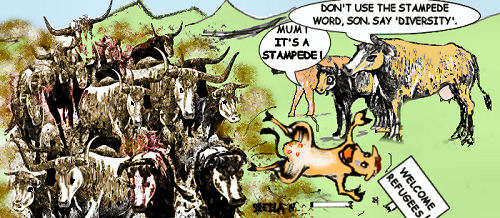
 Item: Statscan reports that Vancouver and Toronto residents are the least happy of Canadians
Item: Statscan reports that Vancouver and Toronto residents are the least happy of Canadians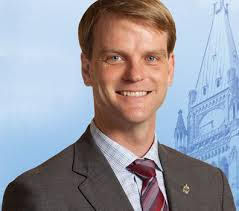
 Is Australia governed by morons? Australia preaches about the Asian Century but behaves like the 18th Century British colonists who originally invaded Terra Australis. If Australia understood what it means to be Asian it would realize that most Asian countries have predominantly indigenous populations. For example, Indonesia, China, Japan, Korea, Myanmar, Thailand and the Philippines to name but a few.
Is Australia governed by morons? Australia preaches about the Asian Century but behaves like the 18th Century British colonists who originally invaded Terra Australis. If Australia understood what it means to be Asian it would realize that most Asian countries have predominantly indigenous populations. For example, Indonesia, China, Japan, Korea, Myanmar, Thailand and the Philippines to name but a few.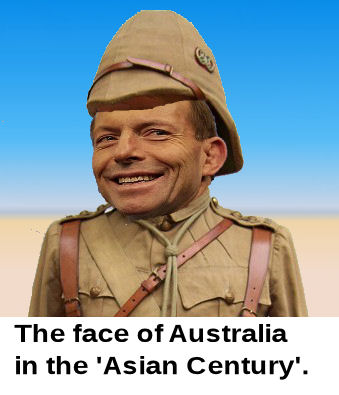 Asian populations grow at varying rates, depending on the level of development and the rates of natural births and deaths. None of these countries subject their people to mass migration as a tool to drive GDP growth in irrational contempt for the social, environmental and economic consequences.
Asian populations grow at varying rates, depending on the level of development and the rates of natural births and deaths. None of these countries subject their people to mass migration as a tool to drive GDP growth in irrational contempt for the social, environmental and economic consequences.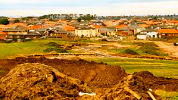 Bandicoot writes in
Bandicoot writes in 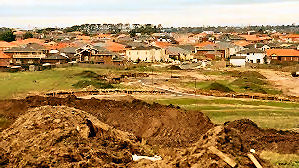
 Two thousand “Temporary” Foreign Workers ---Chinese miners---are coming to extract coal from northeastern British Columbia, Canada, close to three First Nations reserves who suffer unemployment rates over 70% !
Two thousand “Temporary” Foreign Workers ---Chinese miners---are coming to extract coal from northeastern British Columbia, Canada, close to three First Nations reserves who suffer unemployment rates over 70% !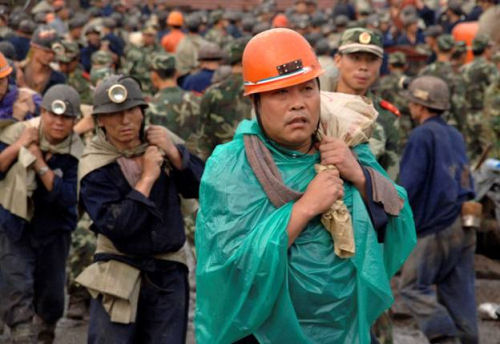

Recent comments